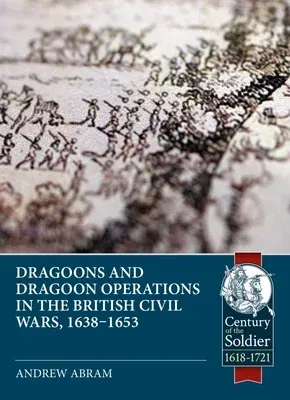This book explores the concept, raising, equipping, composition,
organization, and operational role of dragoons during the British Civil
Wars. It also provides information about known dragoon units and their
activities, across a relatively broad geographical and chronological
range, and challenges previous interpretations in the light of more
recent research. As such, this represents the first sustained study of
early-modern dragoons. These soldiers were an essential part of
seventeenth-century armies, even if some contemporaries reflected
uncertainties about their precise function. Arguably, as part of the
wider context of 'military revolution' in the tactics and prosecution of
war in Europe, during the Thirty Years' War in particular, the medium
harquebusiers and mounted infantry continued to evolve. Although
dragoons occasionally delivered mounted charges, their distinctive
character dictated that they were employed in operations where mobility
was essential - the seizing of bridges and strongholds, raiding,
reconnaissance, patrolling and foraging. Dragoons were also used for
defending hedges and passes, specialist siege operations, and in
providing covering fire for both the horse of foot.
In terms of organization, various regiments of dragoons and autonomous
companies (referred to also as troops) were recruited by all armies,
although some came and went, and several units remain obscure, both in
their origins and history. Some companies were attached to regiments of
Horse, following the continental practice, which was also adopted by the
Scottish armies. Some authors have suggested that civil-war dragoons
were a fighting elite, who were often commanded by professional soldiers
and recruited from veterans of other conflicts. There is some truth in
this - officers such as Prince Rupert, Sir Arthur Aston and Colonel
James Wardlaw led and promoted their role - although there are various
examples of inexperienced, and poorly equipped and officered dragoon
units during the early stages of the wars. Nevertheless, some military
experience is evident from the early stages of the fighting in England,
when some Royalist dragoons seemed better trained and disciplined than
the rest of the army. For the Parliamentarians, many recruits were
obtained in London from returning veterans and foreign professionals.
Among Sir William Brereton's dragoons, some captains were commissioned
in the capital, and in 1642 most of the recruits enlisted there,
possibly in part from Dutchmen or from British soldiers returning from
abroad. Moreover, Colonel Hugh Fraser's Covenanters were built around
'four complete companies' returned from continental service, whilst the
regiment was considered the 'stoutest' in the army.
This book therefore covers the following areas: the origins and role of
dragoons; combined arms tactics and specialist operations; organization
and composition of dragoon units; pay and quarter; arms and ammunition;
standards, equipment and clothing; horses, equine care, saddlery and
fodder; the Oxford Army; the Earl of Essex's Army; the Eastern
Association Army; the New Model Army; and the role of dragoons in
regional warfare.

